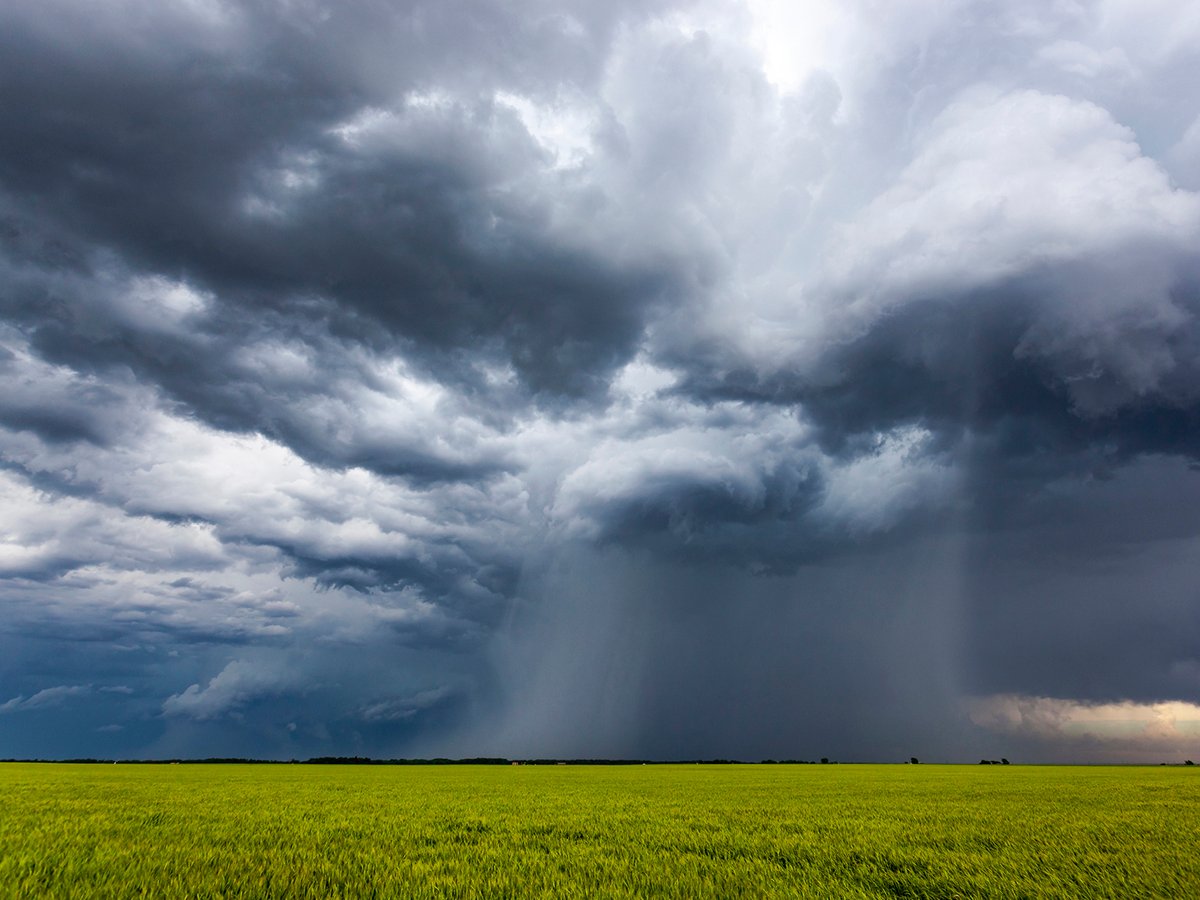OUTLOOK, Sask.- Saskatchewan irrigators will consider hired help to raise the resource’s profile provincially and nationally.
The group plans to investigate hiring an employee to promote the benefits of irrigation and lobby for research and development funding.
At the Saskatchewan Irrigation Projects Association’s annual conference in Outlook on Dec. 1-2, members agreed to double fees from 20 cents per irrigated acre to 40 cents to help pay the employee.
SIPA president James Harvey said the position could be created by June to fulfill duties similar to consultants and permanent staff now working for Alberta and Manitoba irrigation project associations.
Read Also

Extreme rain increases as planet warms
In this issue, we are going to wrap up our look at extreme rainfall by examining the different weather patterns that tend to be associated with these rainfall events.
He said SIPA’s volunteer board has made slow, steady progress and raised the association’s profile in recent years, citing as examples meetings this month with Saskatchewan Crop Insurance to discuss coverage on dry and irrigated acres.
However, he said volunteers are stretched thin.
“We need someone to pound on the doors in Regina.”
A number of programs are under way that the group has piggybacked with, including Saskatchewan Agrivision Corp.’s development of a 50-year water strategy for the province.
Doug Smallwood of the Association of Irrigators of Manitoba said SIPA could also collaborate with Manitoba, where he works, to implement the vision of irrigators.
Such collaboration could be valuable when approaching the federal government for funding, he added, because both provinces are in the early stages of their irrigation potential and have faced similar challenges.
Scott Wright of Saskatchewan Agriculture said industry must show a need for more irrigation before government will consider extra funding to expand projects or create new ones.
He cited the Manitoba example, where processors drove the expansion of irrigated vegetable acres around Portage la Prairie. The province now has 75,000 irrigated acres.
He said economic analysis is needed on the benefits of irrigation investment to the economy as compared to investment in other areas.
Carl Neggers, director general of the Prairie Farm Rehabilitation Administration, reminded members that irrigation is just one use of a precious commodity.
He said urban populations are watching incidents such as the contaminated water disaster in Walkerton, Ont., and need to be reassured that farmers are good stewards of the land and natural resources.
He said PFRA’s goal is to create a water use strategy that protects it but also maintains it in a safe and sustainable way.
“Project proposals will have to be well thought out and rigorous and will be competing with all other water investments across Canada,” Neggers said.
David Hill, executive director of the Alberta Irrigation Projects Association, encouraged producers to move ahead with irrigation plans and take the lead role in developing their own resource and industry.
“It’s better to act than be acted upon,” he said, noting how environmental concerns will have increasing influence on the future of irrigation.
“You have to have a way to expand or farmers will go somewhere else or do something else,” said Hill, who noted there are 1.5 million irrigated acres in Alberta.
He said the Gardiner dam and Lake Diefenbaker project kick started irrigation in Saskatchewan and now producers need to take ownership of irrigation, promote its value to the general public and start the expansion.
Hill said irrigation in Alberta produces crops in dry areas and has increased the population of the southern part of the province.
In Manitoba, irrigation is used sparingly as “an insurance policy” to supplement normally healthy rainfall.
In Saskatchewan, irrigation has the potential to drought proof a province that averages two years of drought a decade, said Al Scholz, executive director of Saskatchewan Agrivision Corp.
SAC just received $204,000 in funding to develop a water use strategy for Saskatchewan for the next 50 years.
There are 330,000 acres under irrigation in the province, with some estimates suggesting it could irrigate three million acres.
In a telephone interview, Scholz said the province needs another dam to drive value-added crop and livestock production and processing.
He said SAC’s water strategy discussions involve government, communities, SIPA and producers to ensure a good flow of information and input and ultimately a greater willingness to invest in future years.
“All players need to be up to speed,” he said, noting the consultant’s report will be presented at a water conference planned for June in Saskatoon.
He said Saskatchewan risks losing its water resource, the “gold of the 21st century,” by not having a long-term water strategy in place.
He noted Alberta is taking all the water it can from what flows east through the province and is looking to use some not used by Saskatchewan. That province uses about 3.5 percent of its share of water that flows from Alberta to Manitoba.














